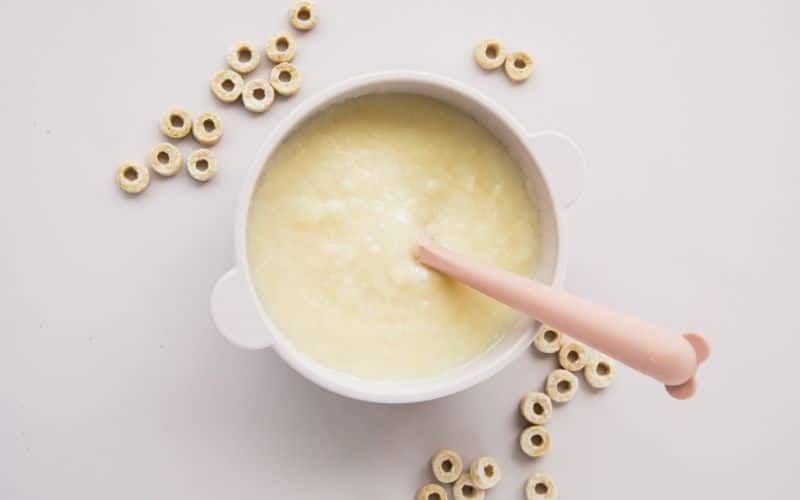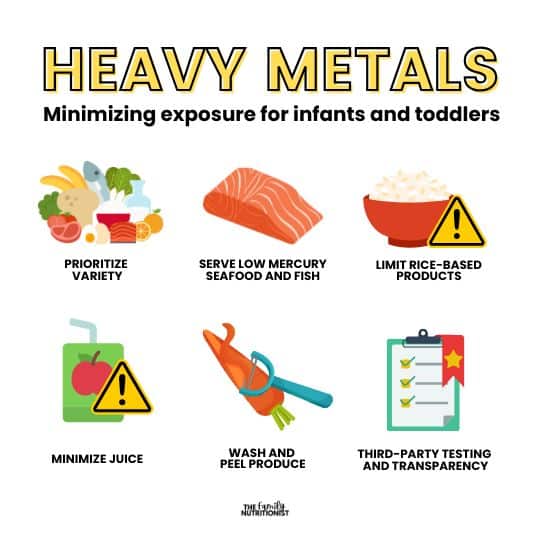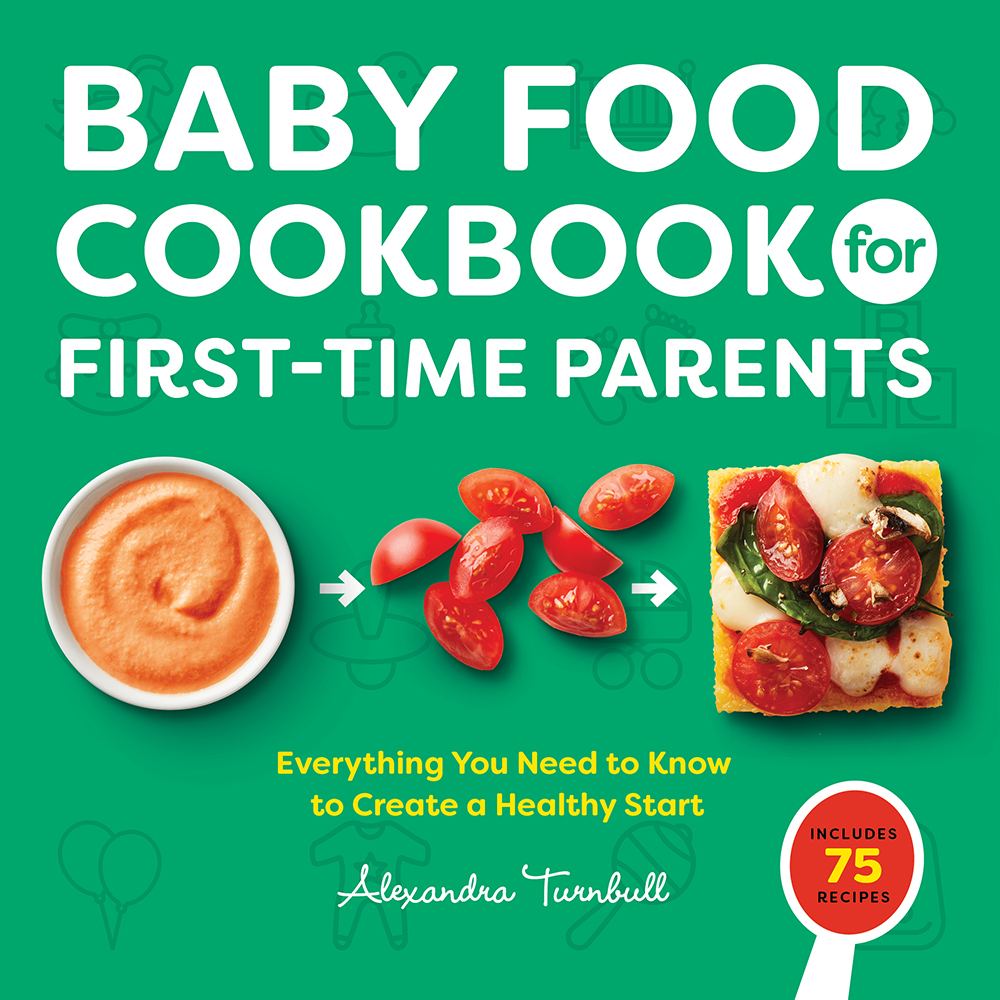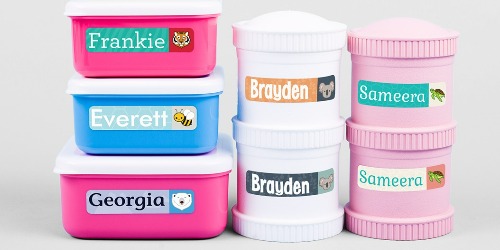
This post may contain affiliate links. Read our disclosure here.
As a pediatric dietitian, I understand how hearing about heavy metals in baby food can be unsettling. While these metals are naturally found in the environment, there are simple ways to reduce your baby’s exposure. In this post, we’ll explore what heavy metals are, how they end up in food, and share easy tips—like offering food variety and choosing alternatives to rice cereal—to help you feel confident about your choices. Let’s keep it practical and stress-free!
Alright, mama, we know—when you first hear about heavy metals in baby food, it’s easy to picture your little one munching away on lead-laced mush and arsenic-filled applesauce. But before you head into full-on panic mode, let’s hit pause. We’re going to break down the situation, give you the facts, and most importantly, help you feel confident that the baby food you’re feeding your little one is totally safe (with just a few simple tips to keep things in check).
Table of Contents
Wait… Heavy Metals in Baby Food?
Yes, you read that right. The reality is that some baby foods may contain trace amounts of substances like arsenic, lead, cadmium, and mercury—but (here’s the big but) it’s usually in tiny, tiny amounts. And before you think it’s time to throw everything out, here’s the scoop: these metals aren’t something food manufacturers are adding on purpose, and the levels found are very carefully regulated – and of course, there’s always room for improvement as we continue to research this topic.
So, where do these metals come from? They’re in the environment—think soil, water, and air. Some foods, especially rice-based cereals and root vegetables like sweet potatoes, naturally absorb them from the earth as they grow. And guess what? It’s almost impossible to have zero exposure. But don’t freak out—what matters most is how much and how often.
How Do Heavy Metals End Up in Baby Food?
Heavy metals like arsenic, lead, and cadmium can end up in baby food through:
- Soil and Water: Naturally present in the environment, absorbed by crops like rice and root vegetables.
- Farming Practices: Past pesticide use and industrial runoff can leave metals in the soil.
- Processing: Trace metals may come from machinery or concentrated ingredients.
- Water Sources: Contaminated water used in farming or production can contribute.
Why It’s Hard to Avoid: Metals are naturally widespread, but levels in baby food are generally low.
Is It Safe? (Spoiler Alert: Yes!)
Now, the question on every parent’s mind: is this stuff safe? The short answer: Mostly yes!
The FDA, the people who regulate food safety, have strict guidelines about how much heavy metal can be in baby food. While the research shows that some products may contain trace amounts of these metals, the levels are typically very low, well within the safety limits, and unlikely to cause harm when part of a balanced diet.
Here’s the kicker: babies are more sensitive to heavy metals, but one snack or jar of baby food isn’t going to hurt them. The concern is with long-term, repeated exposure to higher levels of these metals. That’s why we’re all about moderation and variety when it comes to baby food.
How Is Baby Food Regulated and Tested for Heavy Metals?
Regulation of Baby Food
Baby food in the U.S. is regulated by the Food and Drug Administration (FDA). The FDA sets standards, not requirements, for safe levels of contaminants, including heavy metals like arsenic, lead, cadmium, and mercury. These regulations aim to minimize exposure while ensuring the food remains nutritious, but again, these are guidelines and not requirements!
- Action Levels: The FDA establishes maximum allowable levels of certain heavy metals in foods, such as arsenic in infant rice cereal (currently 100 parts per billion).
- Closer to Zero Initiative: The FDA’s ongoing program works to encourage baby food manufacturers to further reduce heavy metal levels in baby food by improving farming practices, manufacturing processes, and oversight.
- Third party testing: Some companies choose to test their products for heavy metals to ensure compliance with the guidance that the FDA has set. While these third-party testing certifications, like the Clean Label Project can be a helpful tool to determine which brands are taking additional steps to ensure safety, you shouldn’t feel like you should ONLY use products with this label.
How Heavy Metals Are Detected
While testing for heavy metals in baby food is not required, brands may conduct testing voluntarily and this testing involves precise scientific methods to ensure accuracy. Here’s how it’s typically done:
- Sampling: Baby food manufacturers take samples of raw ingredients and finished products.
- Preparation: The food is dried or liquefied to prepare it for testing.
- Testing with Equipment:
- Atomic Absorption Spectroscopy (AAS) or
- Inductively Coupled Plasma Mass Spectrometry (ICP-MS)
These advanced techniques measure even tiny amounts of heavy metals with incredible precision.
- Compliance Review: Test results are compared against regulatory limits to ensure the product is safe.
Rest assured, while trace amounts of heavy metals can occur naturally, baby food companies and regulators take significant steps to ensure your baby’s food is safe.
Common Baby Foods That May Be Higher in Heavy Metals (And What to Choose Instead)
Some baby foods are more likely to contain higher levels of heavy metals due to how they’re grown or processed. Here’s a quick rundown of foods you might want to be mindful of, along with some great alternatives:
1. Rice Cereal
Rice, especially rice-based cereals, is known to contain higher levels of arsenic. Arsenic is naturally present in soil and water, and rice tends to absorb it more than other crops. While a little rice cereal now and then isn’t a huge concern, you may want to mix it up with other grains to minimize exposure.
- Alternatives: Oatmeal, barley cereal, quinoa, or millet are excellent alternatives that are less likely to contain arsenic and still offer a great source of nutrition for your baby.
2. Fruit Juices
Juices—especially apple juice—can sometimes contain lead and other metals. But let’s be real, juice isn’t the best choice for babies under 2 anyway. It’s often high in sugar and doesn’t offer much nutritional benefit, aside from a few vitamins.
- Alternatives: Stick with water or milk (breast milk or formula through 12 months of age) as your baby’s main beverage. If you do offer juice after age 1, keep it to a small amount and choose 100% fruit juice, ideally diluted with water.
3. Sweet Potatoes
While sweet potatoes are a fantastic food choice for babies, they can absorb cadmium from the soil. Don’t worry though, the levels are typically low and pose minimal risk.
- Alternatives: Try introducing a variety of veggies like carrots, peas, or butternut squash to your baby’s diet to balance things out. Sweet potatoes are nutritious, but variety is key!
4. Baby Food Purees (especially rice-based or fruit-based)
Many store-bought purees can contain trace amounts of heavy metals, particularly those made from rice or certain fruits. However, the levels are tightly regulated, and occasional use is completely safe.
- Alternatives: Look for baby food brands that test for heavy metals and provide transparency about their products. You can also make homemade purees from fresh fruits and vegetables for added peace of mind however, homemade versions may still contain trace amounts of heavy metals in baby food.
5. Seafood
Seafood is a great source of nutrients like Omega-3’s and protein, but it’s important to choose options with low mercury levels, especially for babies.
- Alternatives: Look for low mercury fish sources such as salmon, sardines and anchovies, tilapia and pollock, and shrimp.
What About the Magnet Videos? Here’s the Real Deal
Okay, so you’ve probably seen the viral videos where people use magnets on baby food and claim they’re detecting heavy metals. Spoiler alert: magnets don’t actually detect lead, arsenic, or mercury. What’s likely happening is that the particles sticking to the magnet are iron—especially if you’re using iron-fortified baby food. Iron is magnetic, and many baby foods are fortified with it for healthy development.
While it might be surprising to see metallic particles, iron in baby food is completely safe and important for your little one’s growth. So, no need to worry—those magnet tests aren’t a reliable way to detect harmful metals!
The Impact of Heavy Metals in Baby Food
While heavy metals in baby food can have potential health impacts, the key is understanding how they affect children and how to reduce exposure. Here’s a breakdown of each heavy metal and what the research says:
- Arsenic: cognitive and developmental delays.
- Lead: decreased cognitive performance, behavioral problems, delayed puberty, and stunted post-natal growth.
- Mercury: research has mostly been focused on prenatal mercury exposure and has been linked to poor neurodevelopment and lowered IQ.
- Cadmium: increased incidence of ADHD.
Exposure to heavy metals, especially during early childhood, can affect brain development, behavior, and learning abilities. Monitoring and reducing exposure, especially through food choices, is vital for minimizing risks. But remember, it’s impossible to avoid it completely, and overall variety is key for minimizing exposure.
How to Reduce Exposure to Heavy Metals in Baby Food

- Choose a Variety of Foods: Offer a wide range of fruits, vegetables, grains, and proteins to reduce reliance on any one food source.
- Limit Rice-Based Products: Rice tends to absorb more arsenic. Opt for alternatives like oatmeal, quinoa, or barley.
- Serve Low-Mercury Seafood: Stick to fish like salmon, sardines, and tilapia, which are lower in mercury.
- Check for Third-Party Testing: Choose brands that voluntarily test for heavy metals and provide transparency.
- Minimize Juice Intake: Avoid excessive juice consumption (especially for babies under 2) due to its sugar content and potential for metal contamination. Water or milk are better alternatives.
- Wash and Peel Produce: Washing fruits and vegetables and peeling skin can help reduce surface contaminants.
- Buy Organic When Possible: Organic farming practices tend to reduce the use of pesticides and other chemicals that may contribute to metal contamination such as cadmium in organic grains. However, this still may not provide a significant decrease in exposure, but it’s one step you can take if you’re concerned.
These simple steps can help reduce the overall exposure to heavy metals in your child’s diet, ensuring a healthier and more balanced approach to nutrition!
The Bottom Line: You’re Doing Great, Mom
It’s totally normal to feel a little concerned when you hear about heavy metals in baby food, but here’s the truth: you’re not alone in this, and there are steps you can take to ensure your baby’s diet is safe and healthy. The presence of trace metals in baby food doesn’t mean you need to panic— prioritize variety, limit rice-based products, and look for brands with third-party testing and transparency.
For more great options to include in your baby’s diet, learn more here or grab my Baby Food Cook Book for 75 recipes.
Helpful Resources and Research
- FDA’s Closer to Zero Action Plan: FDA Closer to Zero
- House Report on Heavy Metals in Baby Food: Oversight House Report
- Consumer Reports on Baby Food Safety: Consumer Reports
- Clean Label Project: Clean Label Project





